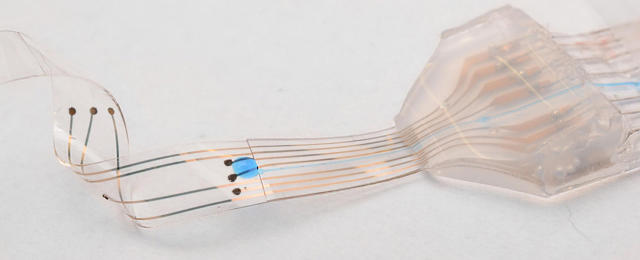The tiny skinlike software attaches directly to damaged spinal cords and stimulates them as in the event that they have been connected to the mind.
March 24, 2015
this is how we may repair spinal accidents one day: with an implant that reconnects our body with the remainder of our frightened device.
Researchers on the Swiss Federal Institute of know-how, in Lausanne, have developed the e-Dura—a tiny skinlike tool that attaches straight away to broken spinal cords. by using sending out small electrical pulses, it stimulates the cord as if it had been receiving alerts from the mind, in this case allowing motion.
“the aim of the neuro-prosthesis is to excite the neurons which can be on the spinal twine under the website online of the damage and spark off them, identical to in the event that they have been receiving information from the brain,” says Stéphanie Lacour, a professor at the institute.

Lacour describes the e-Dura like a rubber band with superb strips of metal in it (tracks and electrodes) for passing small cost of electricity thru. concurrently, the software also has a micro-fluidic channel that can provide a drug. In tests with paralyzed rats, Lacour’s team, working with every other lab, helped the animals walk once more (albeit upright and in harnesses). “the combo of two programs permits the entire restoration of the activity,” Lacour says.
The e-Dura is called after “dura mater”—the protective skin around the spinal twine. To insert the tool, the researchers made a small incision behind the rats, slipping it subsequent to the wire itself, then wiring it out. in the end, as soon as the e-Dura is developed for people, it’s going to almost certainly be managed remotely, or have a battery like a pacemaker.

it is going to be some time ahead of e-Dura is installed in humans. but the venture has answered important questions about attaching something inanimate to one thing as delicate as a spinal cord. you might worry about chafing, and many others., but Lacour says the fabric—a easy silicone polymer—is sympathetic, malleable, and very thin. the material will also be made a single micron thick.
your next step for Lacour, who’s on the supplies and engineering facet of the undertaking, is to appear to connect the device with the actual mind. in the interim, the spinal wire will also be motivated artificially, however now not from the indicators of the mind. Lacour additionally needs to see how the implant can be used in other components of the frightened machine that’ve been broken, like the brain itself.
(151)